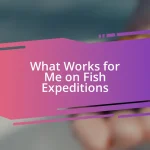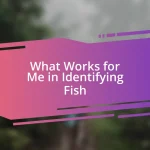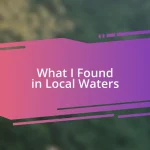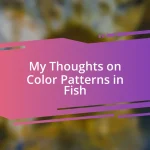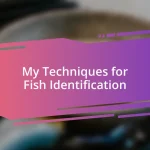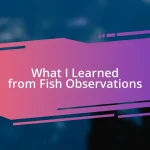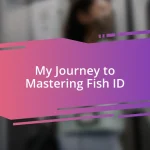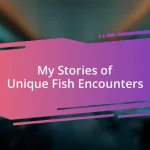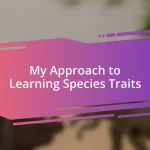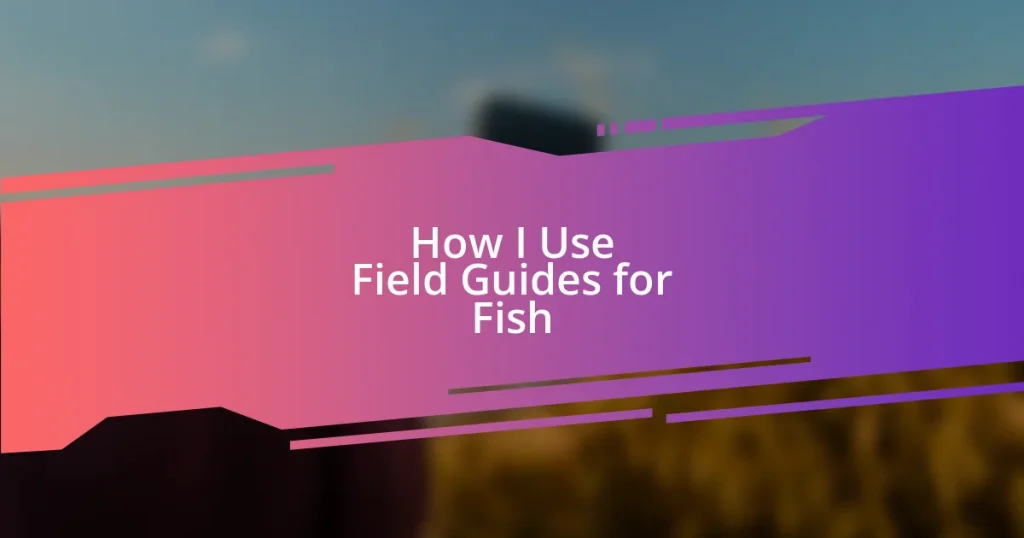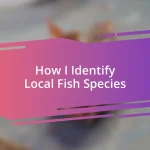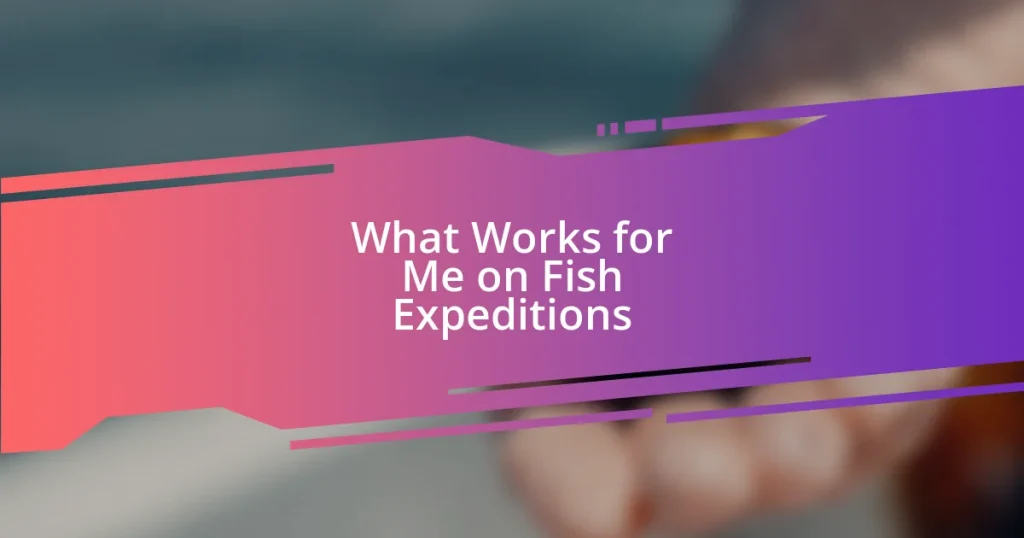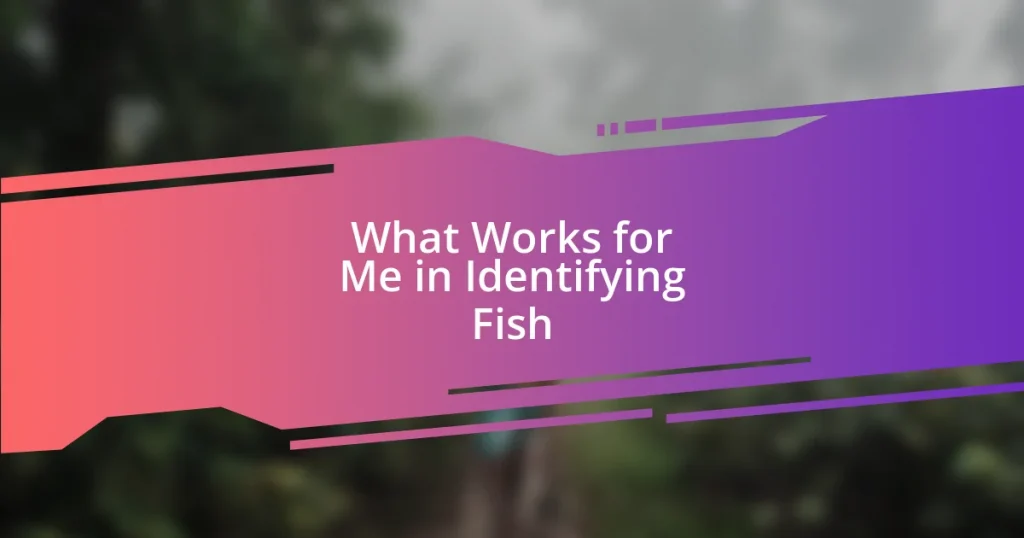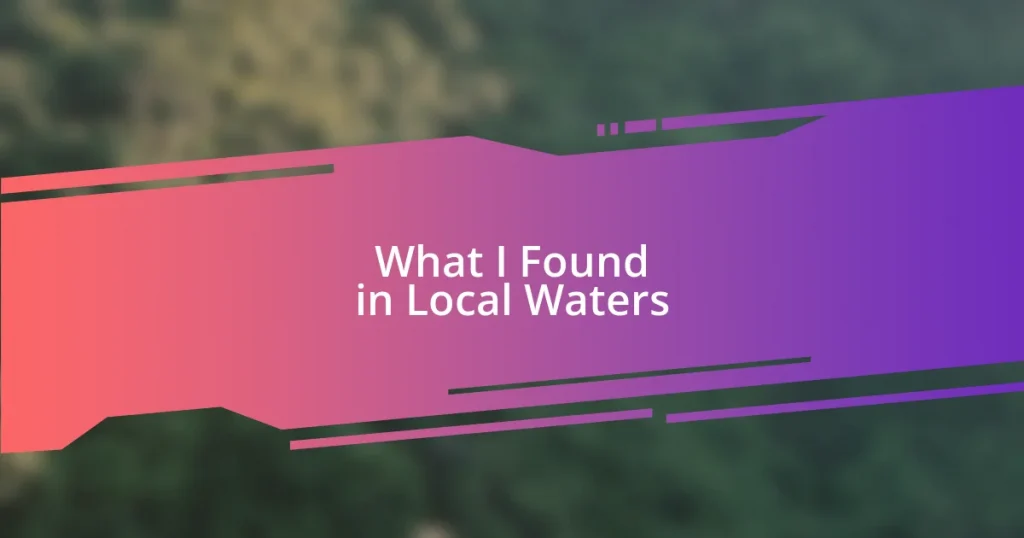Key takeaways:
- Field guides enhance the fishing experience by providing identification tips, knowledge of habitats, and fostering a deeper connection to nature.
- Choosing the right field guide involves considering local relevance, visual clarity, level of detail, user reviews, and portability.
- Recording fish findings in a journal enriches the fishing journey by capturing experiences, techniques, and emotional connections tied to each outing.
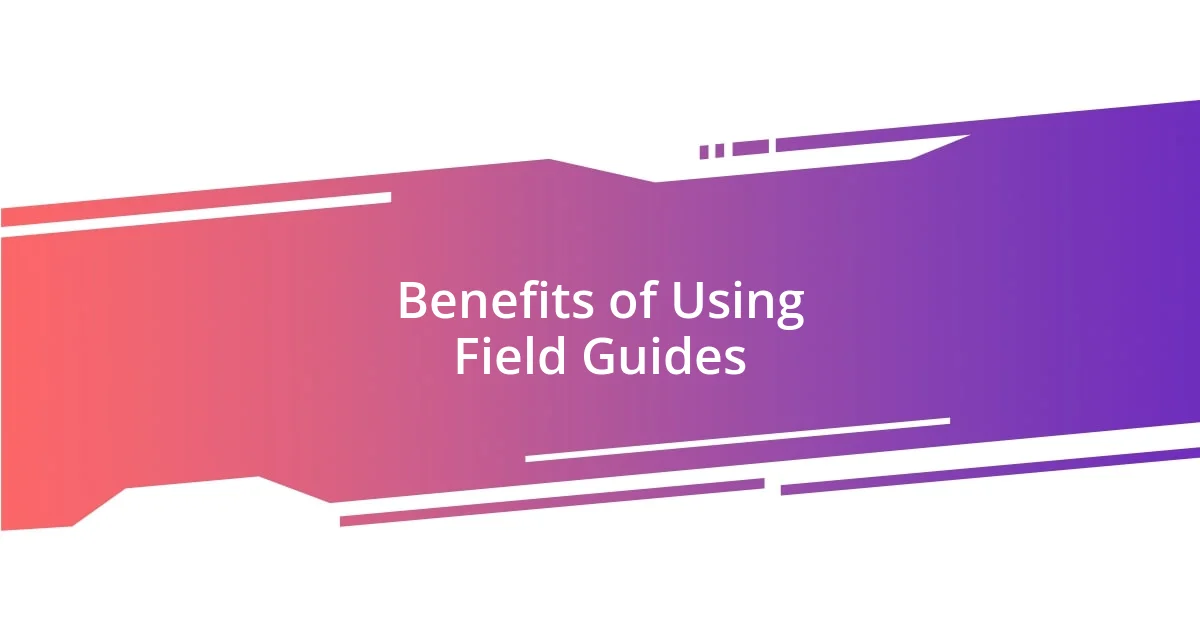
Benefits of Using Field Guides
Using field guides for fish has transformed my fishing experience in ways I never expected. Each time I flip through a page, I feel a sense of connection to nature, as these guides not only provide crucial identification tips but also share fascinating details about the habitats and behaviors of different species. Isn’t it incredible to think that a simple book can turn a casual fishing trip into an educational adventure?
I remember one particularly memorable outing when I encountered a fish I had never seen before. Pulling out my field guide, I quickly identified it as a juvenile bass. That moment of understanding brought a thrill that made the whole day worthwhile. I felt like I was stepping deeper into nature’s classroom, where each cast of the line was an opportunity to learn something new. Who knew that a few illustrations and descriptions could spark such excitement?
Moreover, having a field guide at hand enhances my confidence on the water. Instead of worrying about misidentifying a catch, I can focus on the joy of fishing itself. In this way, field guides not only serve as practical tools but also as companions that empower anglers. They remind us that every fishing trip is a chance to grow, whether by expanding our knowledge or deepening our appreciation for the aquatic world around us.

Choosing the Right Field Guide
When it comes to choosing the right field guide, I think it’s vital to consider your own needs and interests as an angler. For instance, I’ve found that guides focused on local species are particularly useful because they provide relevant information tailored to the waters I fish in. The right field guide should resonate with you, essentially becoming a trusted companion on your fishing trips.
Here are some key factors to consider:
- Local Relevance: Choose guides that cover species you are likely to encounter in your region.
- Illustrations and Photos: Opt for guides with clear visuals; it makes identification much easier.
- Level of Detail: Consider how in-depth the information goes. Some guides offer brief descriptions, while others delve into habitat, behavior, and conservation status, which can be fascinating.
- User Reviews: Look for guides with positive feedback from other anglers; it’s a great way to gauge usefulness before purchasing.
- Size and Portability: Ensure the guide is easy to carry around on your adventures.
I remember the first time I picked up a pocket-sized guide; its compact nature allowed me to easily tuck it into my tackle box. That little book became my go-to resource, and I felt a rush of excitement each time I flipped it open to identify a new catch. Finding that perfect guide transformed my trips, shifting my mindset from simply fishing to actively learning and exploring.
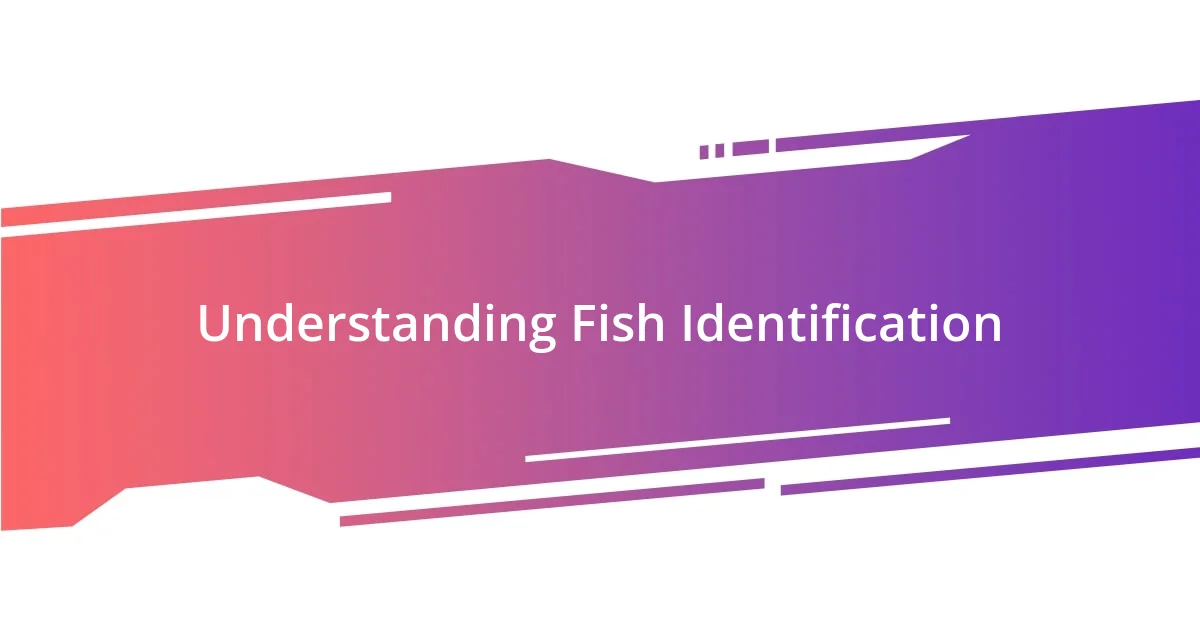
Understanding Fish Identification
Understanding fish identification can be a delightful journey. When I first started fishing, honestly, I had no idea how many species I would encounter. Each fish has its unique characteristics—color patterns, shapes, and fins—that reveal a story of adaptation and survival. The more I learned to identify these traits through my field guides, the more I felt like a part of the underwater ecosystem. It’s a rewarding moment when you recognize a fish not just by its name but by its unique features.
What really opened my eyes was the importance of habitat in fish identification. For instance, some species thrive in freshwater while others are only found in saltwater. I recall a fishing trip to a brackish area, where I mistakenly assumed I would only find freshwater species. But flipping through my field guide, I recognized a snook that had slipped through the tide. The satisfaction of pinpointing a species based on its environment added a whole new level of autonomy to my fishing experience.
Lastly, I’ve come to appreciate the idea that identifying fish is an art and a science. Each fish embodies adaptive traits shaped by years of evolution. The mix of knowledge gained from my field guide and real-life observations truly enhances my understanding. When I catch a glimpse of a sunfish gliding through the water, I am reminded of its preference for structure—whether rocks or vegetation—that I learned about previously. These moments make every fishing outing an opportunity to connect more deeply, turning identification into an enriched adventure rather than just a way to fill a cooler.
| Aspect | Description |
|---|---|
| Physical Traits | Color, shape, and fin structures help differentiate species. |
| Habitat | Understanding where species thrive enhances identification accuracy. |
| Ecological Insight | Identification reveals adaptive traits shaped by evolution. |
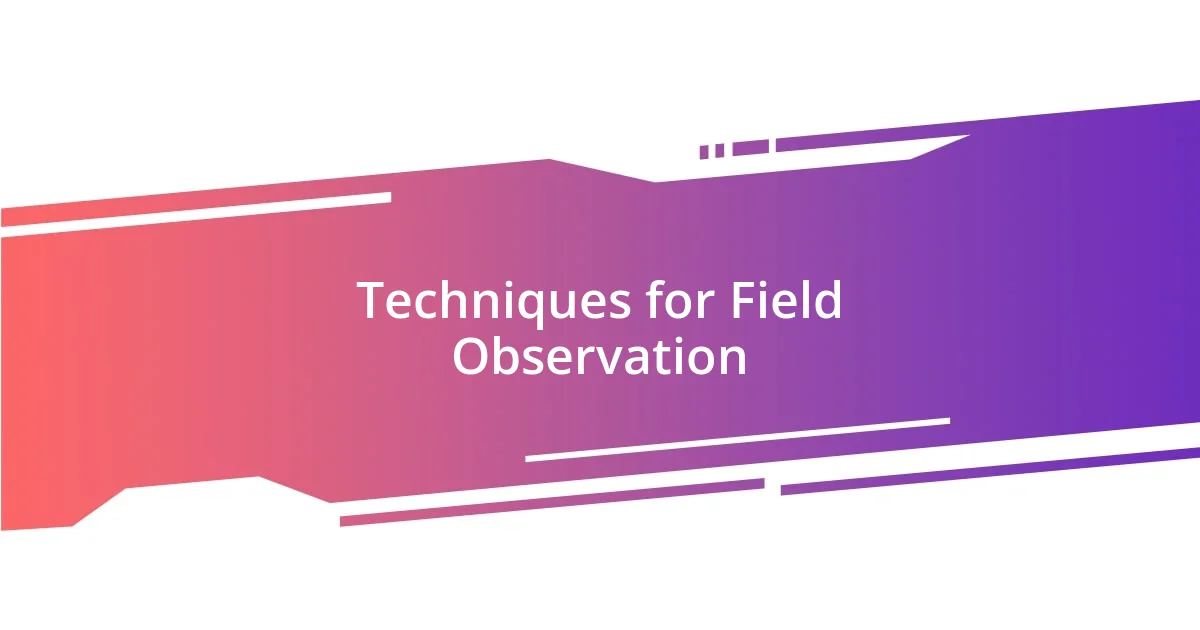
Techniques for Field Observation
One technique I’ve found incredibly helpful for field observation is to take a moment and simply observe my surroundings before making a cast. There’s something about standing still, allowing the sounds of nature—like the rustle of leaves or the splashing of water—to ground me. Connecting with the environment first prepares me mentally to recognize signs that indicate fish activity. Have you ever noticed how a ripple on the surface can hint at a fish feeding nearby? I definitely have, and it always brings a thrill.
When I approach a new fishing spot, I like to employ a method called “spot and stalk.” This involves quietly moving along the water’s edge while scanning for any signs of fish, such as jumping or the telltale swirl of a feeding fish. I remember one sunny afternoon when I spotted a flash beneath the surface; it turned out to be a school of bass. My heart raced as I approached slowly, blending into the vegetation. That moment reminded me that patience and keen observation are often the keys to success in fishing.
Another effective technique is using my field guide as a reference while observing. It’s not just about identifying a fish once I catch it; I actively consult the guide to see what I should be looking for even before that happens. For example, I once studied the shapes and colors of a specific minnow species right at the location where I was fishing. The guide enriched my understanding, and soon enough, I was able to spot them darting around underwater, even before casting. Isn’t it amazing how knowledge can turn sighting into an opportunity for connection?
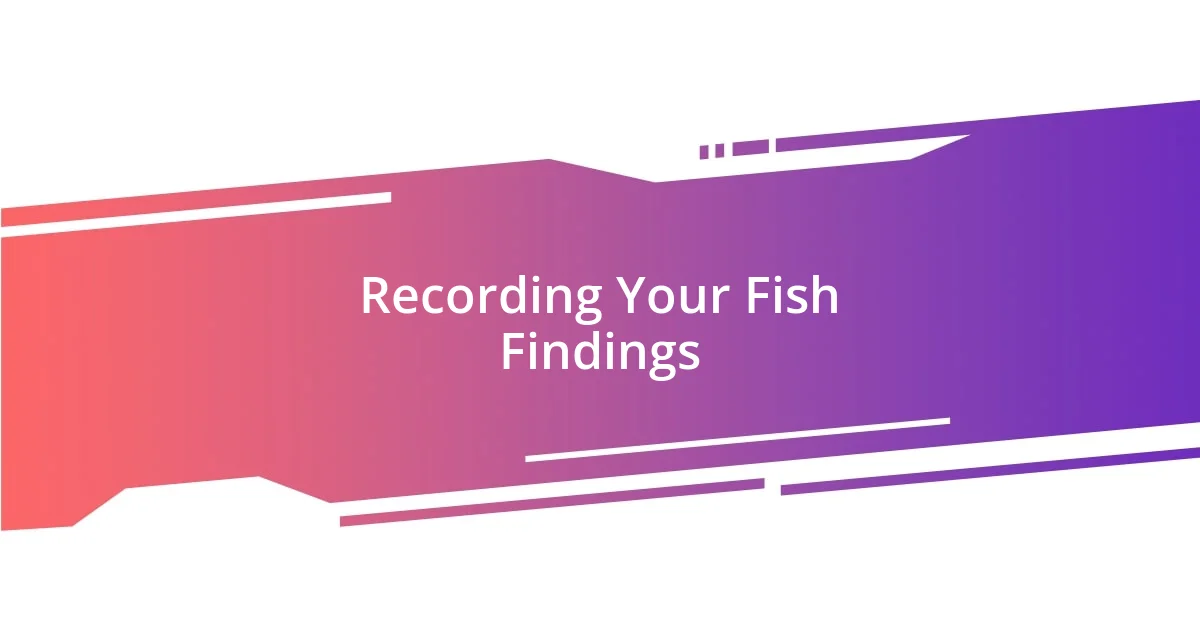
Recording Your Fish Findings
Recording your fish findings can be a profound part of the fishing experience. For me, keeping a dedicated fishing journal has become invaluable. Each time I log details such as the species caught, the bait used, and environmental conditions, I’m not just jotting down statistics; I’m capturing stories. When I look back, it feels like flipping through a beautifully illustrated book of my fishing adventures. Remember the time I hooked a stunning rainbow trout? By noting the exact conditions of that day, I discovered patterns that helped me in future trips.
A simple table format helps me track specific data points, but I also love adding sketches of the fish. There’s something therapeutic about putting pencil to paper and capturing the shape and colors of my catch. Have you ever felt that rush of excitement when you record something special? I remember drawing a vibrant bluegill after a particularly productive day. It was a creative outlet that deepened my connection to the experience. Those sketches remind me of the joyful moments spent beside the water.
Don’t forget about the emotional side of this practice. Each entry often reflects the memories tied to those fish—like the laughter I shared with friends while waiting for a bite. I make it a point to include a personal takeaway from each trip. It’s like writing a letter to my future self, where I can reflect on the techniques that worked and what didn’t. In doing so, my findings become more than just data; they transform into a narrative of growth and discovery, enriching my fishing journey with every page.
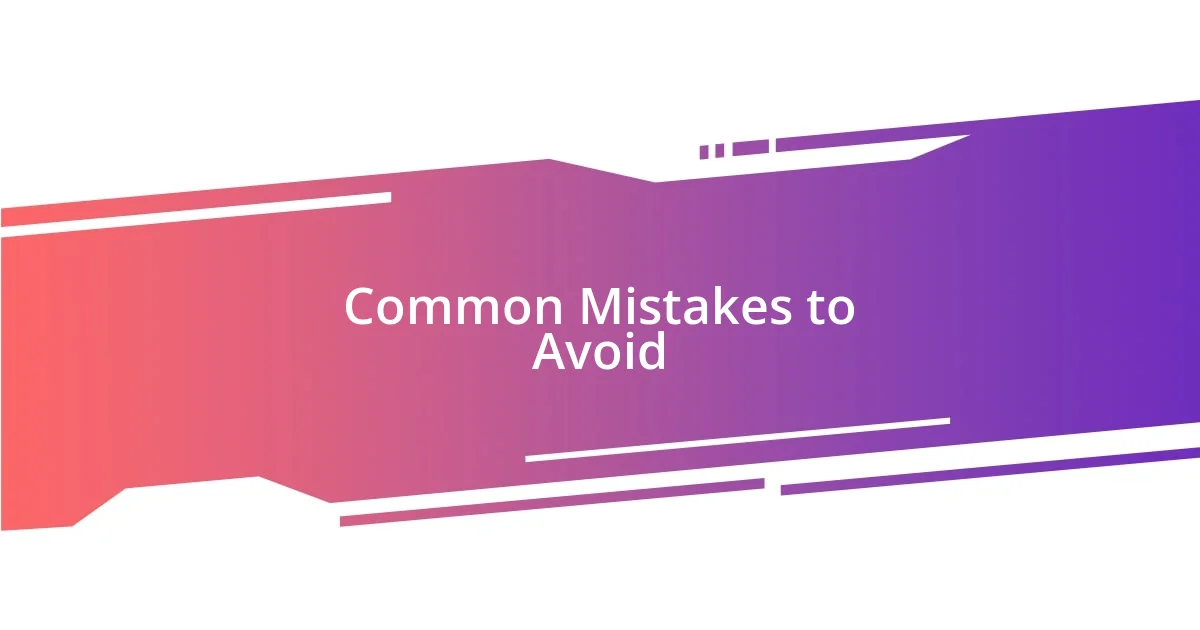
Common Mistakes to Avoid
When using field guides, one common mistake is relying too heavily on them without being present in the moment. I remember a day spent on the river when I was so fixated on flipping through my guide, trying to identify a fish I’d just caught, that I completely missed the signs of an active feeding frenzy just yards away. Isn’t it funny how sometimes information can distract us from experiencing the magic happening right in front of our eyes?
Another pitfall is assuming that all field guides are created equal or that they cover every species you might encounter. I had one such situation when I brought along a guide that didn’t include a crucial local species I stumbled upon. The thrill of discovery quickly turned into frustration as I tried to figure out what kind of fish it was. A comprehensive guide is invaluable, but it should also complement your local knowledge and experience.
I’ve also made the mistake of thinking that the guide has all the answers. It’s crucial to remember that they can’t replace real-life observation and understanding. I once misidentified a fish because I only focused on the pictures and descriptions, rather than considering its behavior and environment. Questions like, “What was the fish doing at that moment?” can lead to greater insights. Trusting my instincts and experiences alongside the guide has greatly improved both my success and enjoyment in fishing.
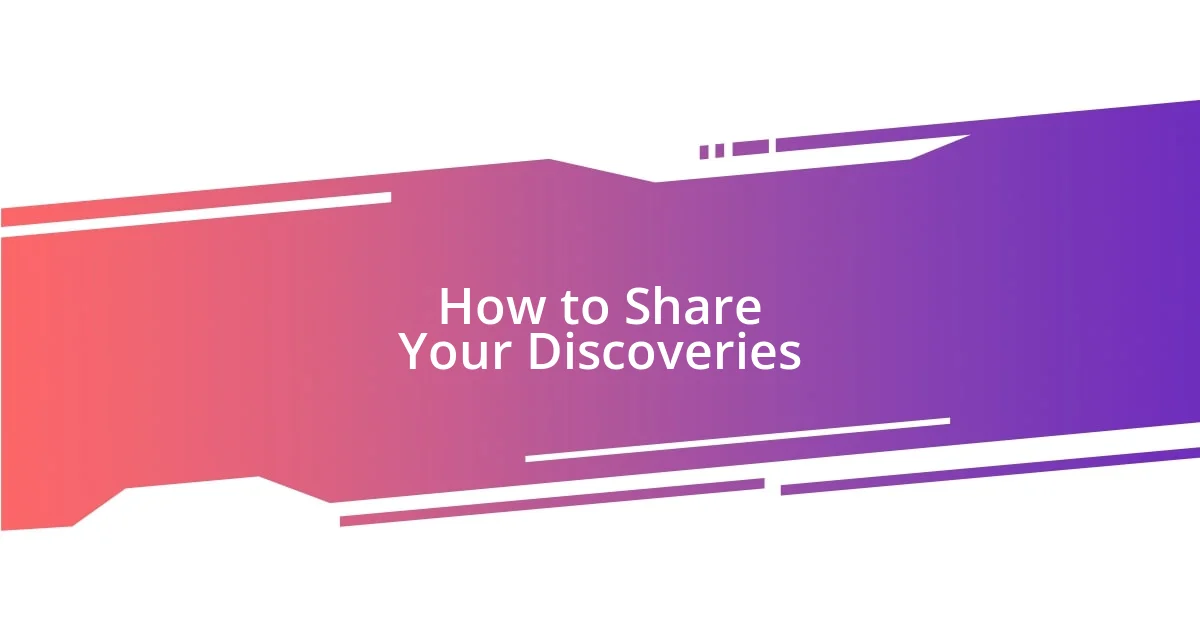
How to Share Your Discoveries
Sharing my fishing discoveries has opened up a whole new world of excitement and connection with fellow anglers. When I snap a picture of a unique catch, I can’t resist posting it on social media, along with my thoughts on how I found it. I vividly remember sharing a photo of a bright red snapper I caught from a rocky shore, and the feedback from friends who had similar experiences sparked so many rewarding conversations. Isn’t it amazing how a simple image can lead to storytelling and shared passion?
Beyond social media, I also find joy in participating in local fishing clubs or community events. Once, I gave a short talk on identifying different fish species using field guides. The thrill of seeing others light up with newfound knowledge was incredible. Have you ever witnessed someone’s eyes widen with understanding? It’s moments like these that remind me why I love sharing my experiences — it brings us together and fosters a culture of learning.
Another rewarding way to share my discoveries is through blog posts or articles. I write about my fishing trips, the techniques I use, and the subtle lessons I learn along the way. Honestly, pouring my heart into writing is like reliving those experiences, as I reflect on what worked and what didn’t. The comments and feedback I receive often encourage others to try new things, and that’s where the real magic happens. It’s a cycle of inspiration that continues to fuel my passion for fishing. How do you share your adventures?
